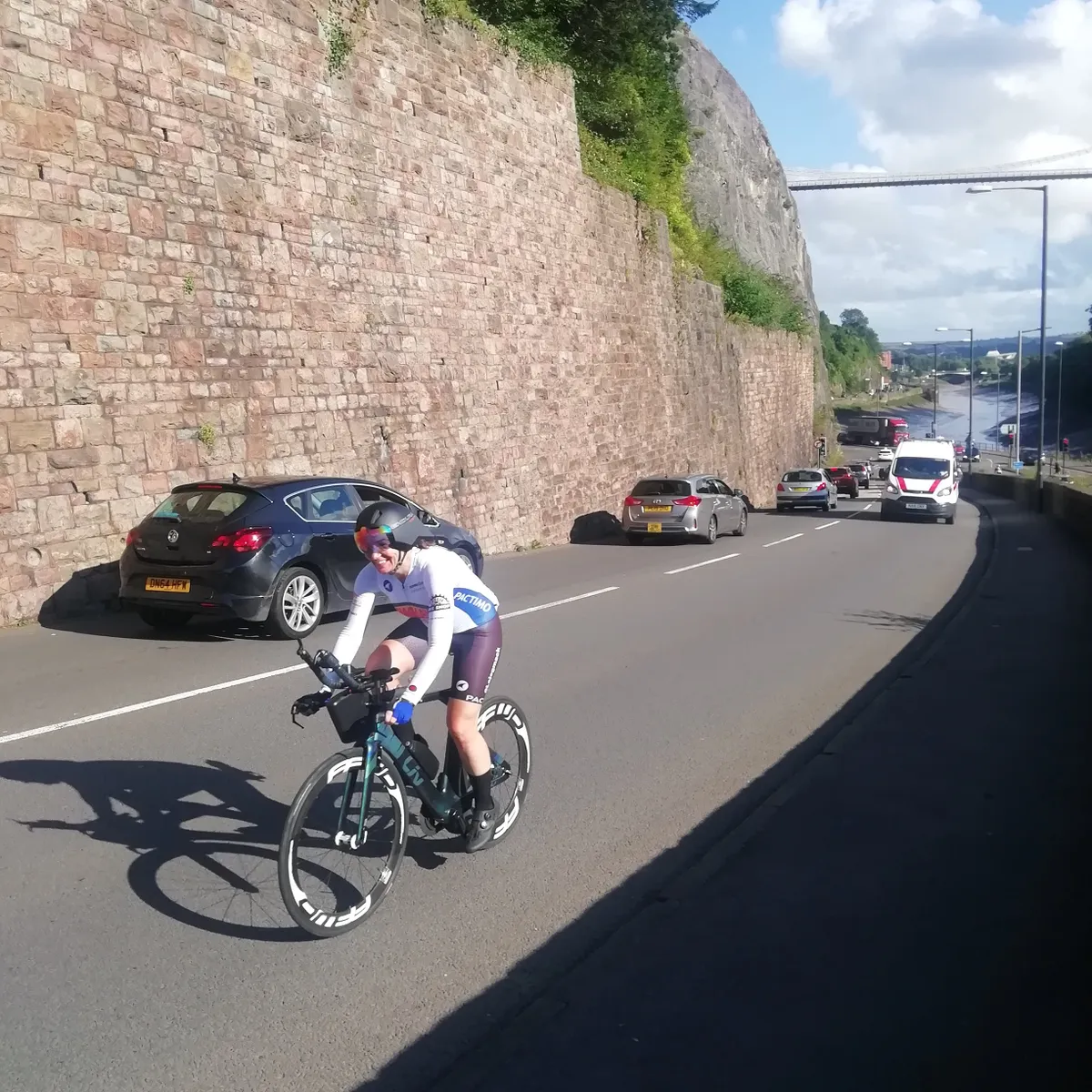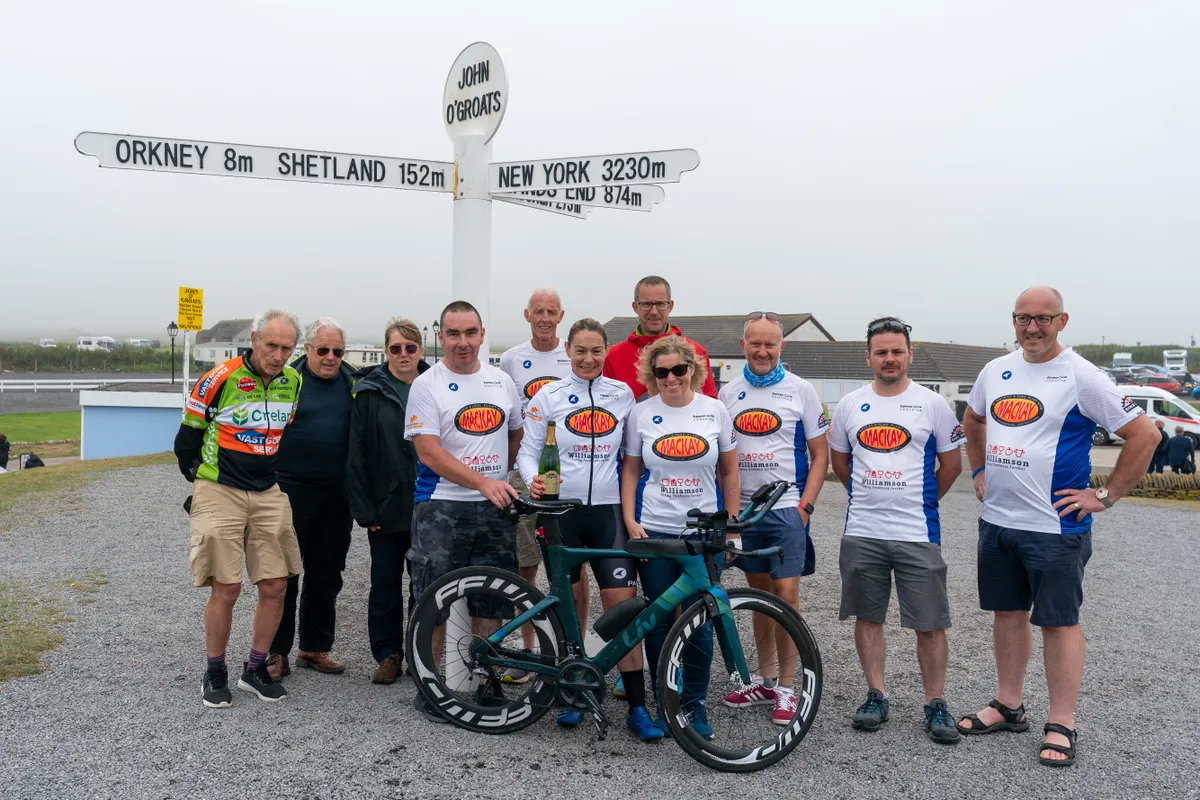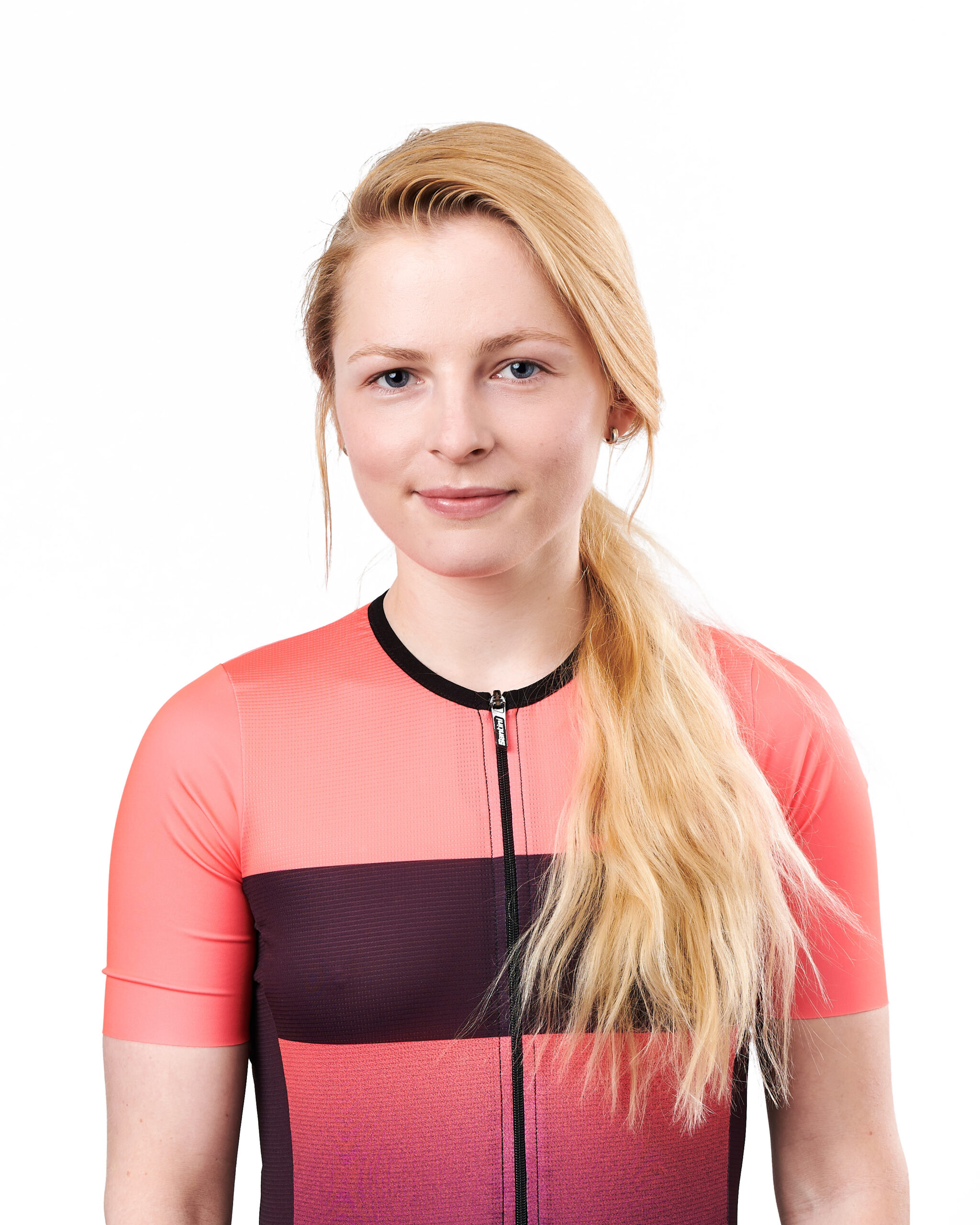Originally from the Isle of Lewis, Christina Mackenzie cycled her way into the record books on 28-30 July 2021 by setting a new End to End (Land's End to John O'Groats, 874 miles) solo women's world record, in a time of 51 hours, 5 minutes and 27 seconds. Now two weeks on from the mind-blowing record attempt, 220’s Kate Milsom catches up with the Scotswoman back home in Stirling…
220: You’re known as the Scottish Ironwoman, how did triathlon lead you to where you are today?
I did my first triathlon on a mountain bike, but I loved it. I did Galway half Ironman in 2012, the Irish sea was a washing machine, but I did it and I loved it, so much so that I decided to do Ironman UK in 2013. From then, I just got completely addicted. I loved that fact that the days when you didn’t want to run you could just get on the bike, other days in the pool. Going from the shorter distance up to the Ironman, that was my motivation. Then I started doing 24-hour multisport races, it just seemed to get more extreme the more that I did. All the running that I'd been doing was playing havoc with my body, which is when I decided to focus more on long-distance, single-sport cycling.
I started doing 24-hour multisport races, it just seemed to get more extreme the more that I did
220: Did you always believe you would break the record?
It’s such a long way, anything can happen. So you can’t really think that things are going too well. There could be a change of weather, a mechanical, an accident up ahead. Not until the home straight at the Keswick Bridge with 111miles to go, did I know that I had a comfortable margin and I only had to average 12-13mph. The realisation then during the last 30-20 miles, it started to sink in, but these were the hardest because the road surface was awful.
220: How did you train for the attempt?
I had planned to attempt it last year, but with the Covid restrictions we weren’t able to do that, which gave us an extra year to work on training. In terms of the training, there was complete variation and very different from what I’ve done in the past. There was a lot of getting high miles, but also doing threshold, VO2 max, and hill intervals, which I’d never really done much of before. It got my body really used to that fatigue and recovery mode, and shocking it into something completely different. Six weeks prior to the attempt, I did a long training weekend when I did 200 miles over three days. Each day had 10,000m of climbing, so over that weekend I did the full elevation of the [LE JOG] attempt, but over 600 miles.
220: What made you go for the LE JOG record in particular?
I’d done the Mersey Roads 24-hour TT twice [and won], and each year I’d progress the mileage, but at the same time it wasn’t a huge distance. In that environment, I met the likes of Mike Broadwith and Jasmijn Muller, who had attempted [LE JOG] and Mike had got the record in 2018. I was just really intrigued by it. My initial thought was, 'that’s mad'. But another part of me was like, 'what if?' It was with one of my friends over a glass of wine who planted the idea in my head and said they would support me. That seed got planted, and just grew and grew...
That seed got planted, and just grew and grew...
220: What made you attempt the record again after falling short in 2019?
After 2019 I thought ‘never, ever again’. But a few week’s later, I got a call from Gary Hand who’s an ex-Scottish cycling champion himself, wanting to just have a chat and hear all about it. But little did I know that I was lured over false pretences. By the end of it, I'd agreed to attempt it again under his coaching and with the support of my team.
220: What goes into planning a record attempt?
It is a logistical nightmare. Sometimes I think that riding that bike is the easy part. The course itself was one that Mike had handed down to me, tried and tested. You have to submit a schedule so that 70 checkers along the length of the country know where you are at a certain time.
a logistical nightmare
In terms of logistics, we all work full time, so we had to get a weather window date for when we could go. We’d all agreed from 25 July to 5 August would be our weather window. I had downloaded every single available weather app...and every one was completely different. It was so changeable.
I had it in my head that Wednesday 28th was looking a good day to go, but it kept changing and I would nearly be in tears seeing how it had changed again. You can never plan to get 100%; when you’re going all the way up from England to the north of Scotland, you’re never going to get perfect weather.
220: Take us through those 51 hours and 5 minutes…

The start of it was amazing. We had arrived down [Land's End] at seven in the morning, with plenty of time to get everything set-up and myself mentally prepared. Eight o’clock went, and we set off, navigating out of the car park and hitting the A30. It’s a busy stretch of road, I was looking down at my speedo and my average pace was 20mph but I was sitting in zone one heart rate. This carried on for six hours, I thought, ‘this is great, I’m loving it’. But I knew it wouldn’t last.
We navigated through Exeter really well, there’s so many roundabouts so the guys got out and gave me directions. I had my first five-minute stop at that point. Then through Bristol, the cycle club was out and at every corner there was someone giving me directions. It was amazing. Seeing people up there [at Bristol Suspension Bridge] was just so nice, especially on a hill. I was dying, but at the same time you just have to keep smiling because there are people out cheering.

Travelling right through the country at night-time, through Worcester and Gloucester, Lynne Taylor [previous LE JOG 2002 record holder] came out at around midnight and gave me a big shout. I only realised afterwards it was her.
Going up through the likes of Preston at three in the morning, it was that dull rain, going through industrial estates. It was a real slog. I was still seeing people, though. There was Doug Heart who came running along beside me and told me it’d be dry in Scotland. You’d have thought I’d won the lottery, I hung onto his every word.
I got into Greta Green and straight into a headwind. Through Abington was probably the toughest section, a 20-mile stretch against the wind and the road surface was terrible. If ever there was a time I wanted to get off the bike and get into the van, that was it. But that was where the training stood me because I knew that I had to keep my head down, not fight it, and keep spinning the legs.
If ever there was a time I wanted to get off the bike and get into the van, that was it
Coming into Scotland, it just got a bit crazy. My friends on the Forth Road Bridge coming into Edinburgh. There were banners and signs and cow bells. The whole route from there was just lined.
I was going into my second night without sleep now. I had originally planned to sleep at Penrith for 20 minutes, but my head was still buzzing at that point, I just wanted to keep going. My team were keeping an eye on me to make sure I wasn’t falling asleep and if I was, they would pull me in.
It was daylight again going onto the A9. Again, there was a group from Stirling bike club at the roundabout with cowbells and signs. They leapfrogged along the A9, cheering me.
Coming into Inverness at three o’clock in the morning, there was a friend of mine’s son playing the bagpipes. That was a real funny experience. I thought, ‘what are these people doing up? They should be in bed.’
The last 100 miles felt like the longest. In my head I was trying to break it down, thinking that it was just half of one of my long rides. Trying to have that rationale. At the same time I was still thinking, ‘why am I cycling to John O’Groats and everyone else is driving? I should just get into the cars with them.’ You just have to keep persevering.
I knew I was about an hour and a half up on the record. But I was fully aware that there are other girls interested in attempting it, so while I’m here and I’ve got miles in my legs, I might as well just keep going. I can rest when I’m done.
I can rest when I'm done
I’ve gone over that moment in my head so many times, coming into John O’Groats there were people cheering, there was so much atmosphere. Just the realisation that I’d done it. I was in tears. Everything was sore, everything was hurting. Knowing the amount of money that we’d raised for charity as well. I was basically a bit of an emotional mess.

220: How did you plan your rest and nutrition en route?
We had it planned really well. A balance that worked for me, to get enough carbs through hydration and food, was to get handouts every hour. They had to be by the side of the road and not from a moving car, which was logistically quite hard for the team to do 50 times. We put an elastic round a bottle with the food on, and it was having to negotiate holding onto the bike, grabbing the bottle, throwing away the old bottle, and taking the food with my teeth from the elastic. The food was a combination of Mountain Fuel energy bars and gels, and just general cheese and ham wraps, they were amazing. One of my little treats was millionaires shortbread, those gave me a boost.
220: What moment stands out to you?
It was really a rollercoaster physically and mentally. One minute you could be loving it, another you could be questioning yourself, your sanity, why you’re doing it. Seeing everyone on the roadside, those were the highs of every part. And the last 10 miles, just realising that I was riding my way into the record books. It was really emotional, and knowing all the people who had supported and believed in me. At that point I’d raised £8,000 for Alzheimer’s Scotland, my mother was diagnosed with vascular dementia, and to know that people were supportive of that... Thinking of my mum those last 10 miles gave me the motivation to keep going.
One minute you could be loving it, another you could be questioning yourself, your sanity, why you’re doing it
220: So, what’s next?
Triathlon could be something I could easily get back into, it’s a never say never kind of thing. I’ve got no injuries and I love watching the extreme back-to back Ironmans. I’ve got a couple of things in the pipeline, but at the moment I’m just enjoying some downtime with the family.
Who is Christina Mackenzie?
Originally from the western Scottish Isle of Lewis, Mackenzie, 44, spent her childhood outdoors roaming around the island and getting stuck into all sports. After studying sports coaching at Glasgow and spending, in her words, too much time in the pub, Mackenzie decided to do her first 10km run in 2010 to raise money for Macmillan Cancer, her father having died from cancer when she was 18. What followed was an illustrious career of marathon running and triathlon racing of all distances, Mackenzie becoming a top age-grouper and moving towards endurance cycling and twice winning The Race Donegal ultra-adventure race. Mackenzie now lives in Stirling and is a swim development officer, helping to organise swim lessons for the next generation of adventurers.
Donate to Mackenzie’s Just Giving page in support of Alzheimer Scotland here.
